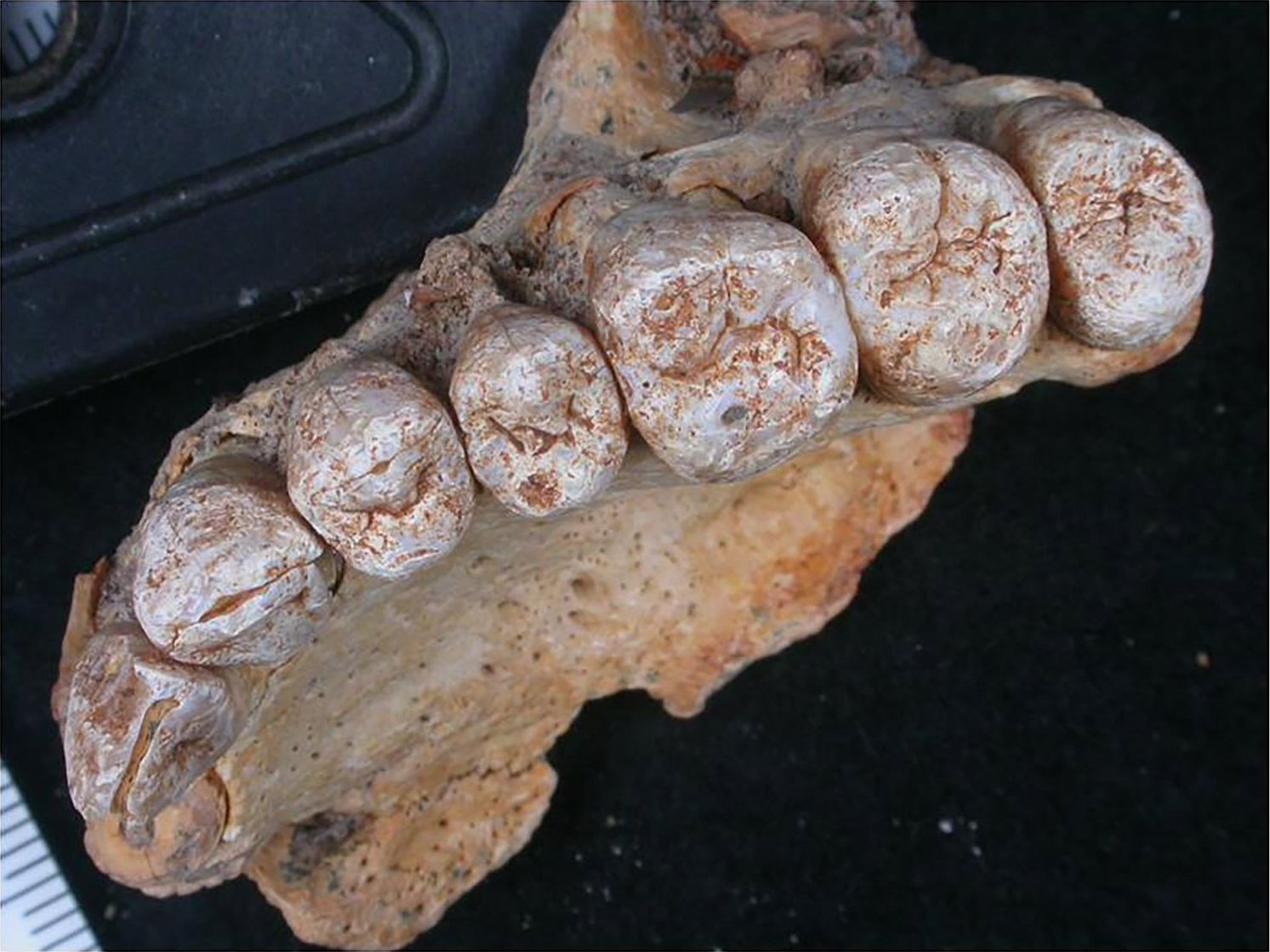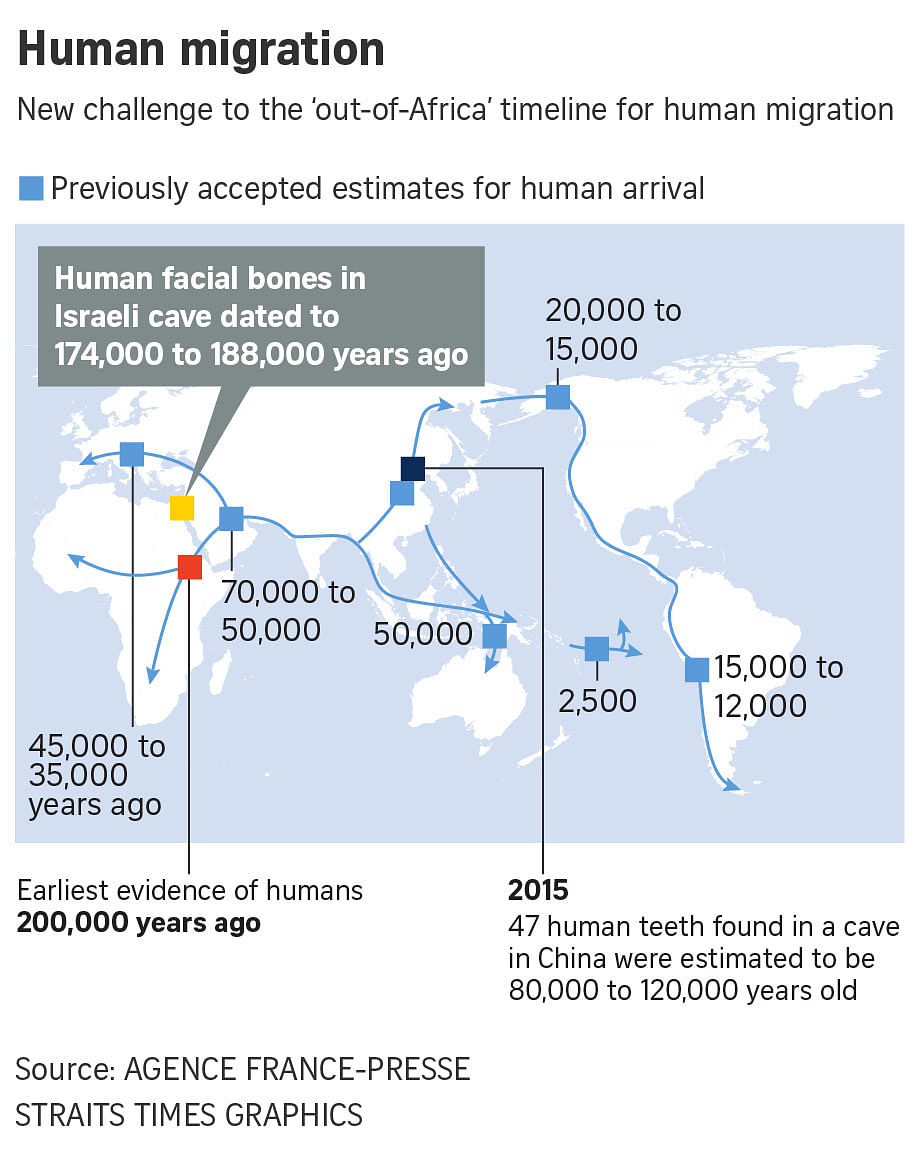Discovery of ancient jawbone in Israeli cave suggests humans left Africa 50,000 years earlier
Sign up now: Get ST's newsletters delivered to your inbox
Follow topic:
TEL AVIV (NYTIMES) - Scientists on Thursday (Jan 25) announced the discovery of a fossilized human jawbone in a collapsed cave in Israel that they said is between 177,000 and 194,000 years old.
If confirmed, the find may rewrite the early migration story of our species, pushing back by about 50,000 years the time that Homo sapiens first ventured out of Africa.
Previous discoveries in Israel had convinced some anthropologists that modern humans began leaving Africa between 90,000 and 120,000 years ago. But the recently dated jawbone is unravelling that narrative.
"This would be the earliest modern human anyone has found outside of Africa, ever," said John Hawks, a paleoanthropologist from the University of Wisconsin, Madison who was not involved in the study.
The upper jawbone - which includes seven intact teeth and one broken incisor, and was described in a paper in the journal Science - provides fossil evidence that lends support to genetic studies that have suggested modern humans moved from Africa far earlier than had been suspected.
Hawks and other researchers advised caution in interpreting the discovery. Although this ancient person may have shared some anatomical characteristics with present-day people, this "modern human" would have probably looked much different from anyone living in the world today.
"Early modern humans in many respects were not so modern," said Jean-Jacques Hublin, director of the department of human evolution at the Max Planck Institute for Evolutionary Anthropology in Germany.

Hublin said that by concluding the jawbone came from a "modern human," the authors were simply saying that the ancient person was morphologically more closely related to us than to Neanderthals.
That does not mean that this person contributed to the DNA of anyone living today, he added. It is possible that the jawbone belonged to a previously unknown population of Homo sapiens that departed Africa and then died off.

That explanation would need to be tested with DNA samples, which are difficult to collect from fossils found in the arid Levant.
The upper jawbone, or maxilla, was found while excavating the Misliya Cave on the western slopes of Mount Carmel in Israel.


